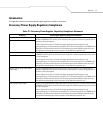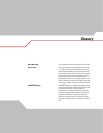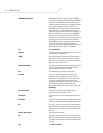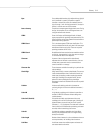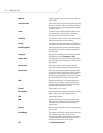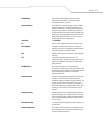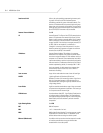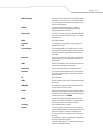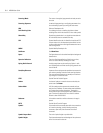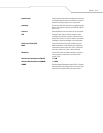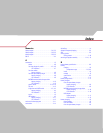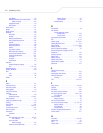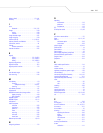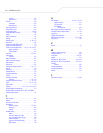
Glossary GL-7
Mobile Computer In this text, mobile computer refers to the Symbol portable
computer. It can be set up to run as a stand-alone device,
or it can be set up to communicate with a network, using
wireless radio technology.
Nominal The exact (or ideal) intended value for a specified
parameter. Tolerances are specified as positive and
negative deviations from this value.
Nominal Size Standard size for a bar code symbol. Most UPC/EAN codes
are used over a range of magnifications (e.g., from 0.80 to
2.00 of nominal).
NVM Non-Volatile Memory.
Parameter A variable that can have different values assigned to it.
PDT Portable Data Terminal.
Percent Decode The average probability that a single scan of a bar code
would result in a successful decode. In a well-designed bar
code scanning system, that probability should approach
near 100%.
Quiet Zone A clear space, containing no dark marks, which precedes
the start character of a bar code symbol and follows the
stop character.
RAM Random Access Memory. Data in RAM can be accessed in
random order, and quickly written and read.
Reflectance Amount of light returned from an illuminated surface.
Resolution The narrowest element dimension which is distinguished
by a particular reading device or printed with a particular
device or method.
RF Radio Frequency.
ROM Read-Only Memory. Data stored in ROM cannot be changed
or removed.
ROM-DOS The name of the licensed Disk Operating System loaded
into the terminal’s flash file system.
Router A device that connects networks and supports the required
protocols for packet filtering. Routers are typically used to
extend the range of cabling and to organize the topology of
a network into subnets. See Subnet.
RS232 An Electronic Industries Association (EIA) standard that
defines the connector, connector pins, and signals used to
transfer data serially from one device to another.
Scan Area Area intended to contain a symbol.
Scanner An electronic device used to scan bar code symbols and
produce a digitized pattern that corresponds to the bars and
spaces of the symbol. Its three main components are:
1. Light source (laser or photoelectric cell) - illuminates a
bar code.
2. Photodetector - registers the difference in reflected light
(more light reflected from spaces).
3. Signal conditioning circuit - transforms optical detector
output into a digitized bar pattern.



